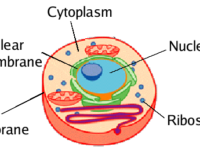In 2020 alone, 13.4 million premature babies were born. In 2019, over 900,000 children died due to preterm-related conditions and complications. Premature is defined as being born earlier than 28 weeks of gestation, or 70% of the way through full-term. As it stands, premature birth is the leading cause of death in children under five years old, and even when a premature child makes it through development, it is rarely without problems. A report in the Journal of the American Medical Association estimated that from a sample of 5,931 children born premature, 78% had at least one chronic health condition compared to the 37% of full term babies. These health conditions include, but are not limited to, asthma, cerebral palsy, anxiety disorders, delays in mental development, hypertension, and epilepsy.
“Knowing the severity and prevalence of premature births, the Children’s Hospital of Philadelphia (CHOP) began research on the use of artificial wombs with baby lambs.”
Knowing the severity and prevalence of premature births, the Children’s Hospital of Philadelphia (CHOP) began research on the use of artificial wombs with baby lambs in 2017. Accomplished with the help of Vitara Biomedicals and $100 million, the device known as the Extra-Uterine Environment for Uterine Development (EXTEND) was developed. CHOP’s research started with eight lambs, all of which were born premature and were kept alive for four weeks with the help of EXTEND. These initial trials were deemed successful as the lambs were able to reach full brain maturity with minimally observed side-effects. Since 2017, CHOP has experimented with over 500 lambs and is currently seeking FDA approval to start clinical trials on humans.
“EXTEND works by integrating the fetus into an artificial environment that mimics what it would experience in an actual womb.”
EXTEND works by integrating the fetus into an artificial environment that mimics what it would experience in an actual womb. While the current machine ventilators provide oxygen and remove carbon dioxide, they lack an aspect of physical integration that a natural womb provides: amniotic fluid, which is necessary for proper lung development. EXTEND corrects this through the use of biobags which contain amniotic-like fluid and blood vessels that are surgically connected to the umbilical cord in a matter of minutes. This allows for the fetal heart to continuously pump blood and maintain proper circulation.
While CHOP’s development of artificial wombs might seem like a uniquely futuristic approach, it is not alone. In fact, many companies across the globe are trying to accomplish the same thing. For example, researchers at the University of Michigan are currently developing a similar system, but it does not surround the fetus with fluid. Out of all of the approaches though, CHOP is believed to be the closest to human trials and is thus, most commonly brought into the public light.
On Sept. 19th, 2023, the FDA convened to discuss the ethical implications of this new technology and how human trials would work. While it met behind closed doors, there was a public opportunity to raise questions and concerns. Many of these concerns stem from the lack of long-term data to justify the implementation of artificial womb technology.
To be approved, the FDA would need to be certain that human babies would benefit from the system with minimal risk. Even if the long-term data is adequately provided, there is still the problem that lambs are not humans and many wonder if that jump is too large to justify. In the context of EXTEND, lambs were chosen because of their manageable size when compared to a much smaller and more delicate human fetus. On the other hand, some experts in the field question whether or not artificial wombs are the correct way to spend research money. They believe that it would be more beneficial to focus on finding ways to lengthen the babies’ gestation period, rather than focusing on their limited chance of survival after premature birth.
From an ethical standpoint, many questions also arise. The most prominent concern is how these artificial wombs define what birth, or even a fetus is, since it is no longer contained within a traditional womb. Abortion will likely become a larger point of contention as people debate what will happen if a woman chooses to abort a fetus when this technology is available. Similarly, the idea of consent and a physician’s role in regards to the technology are both also under question and seemingly need to be mapped out before any human trials begin.
“…it has become obvious that the morality of science is more important than ever.”
The FDA’s current status is not known, but it has become obvious that the morality of science is more important than ever. As the world continues to advance, the two will become even more intertwined.






